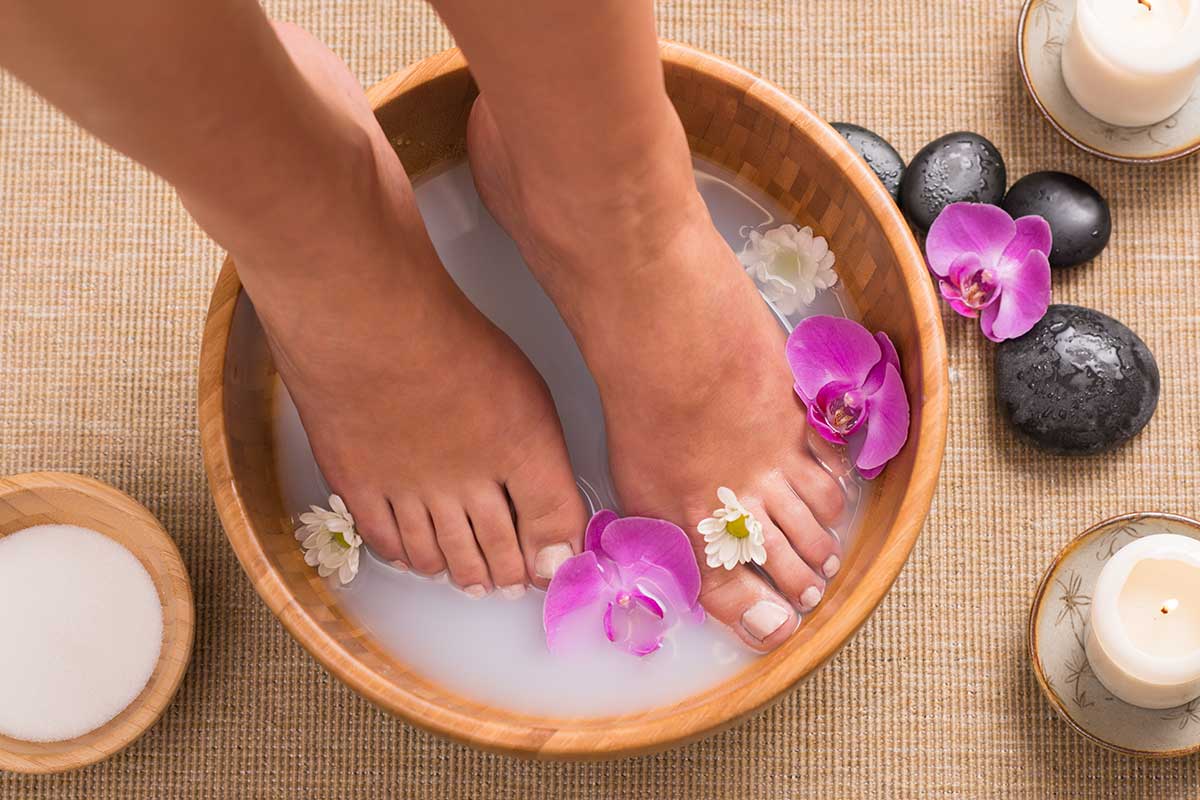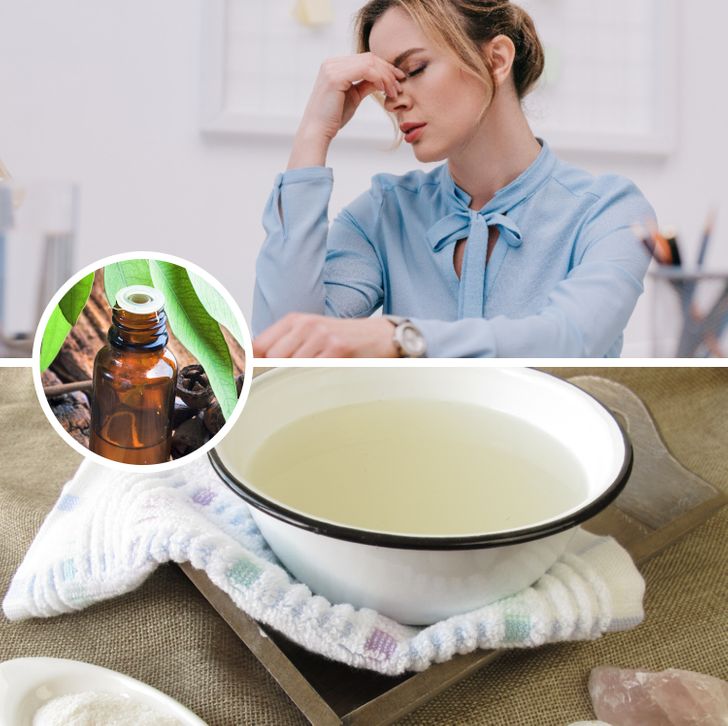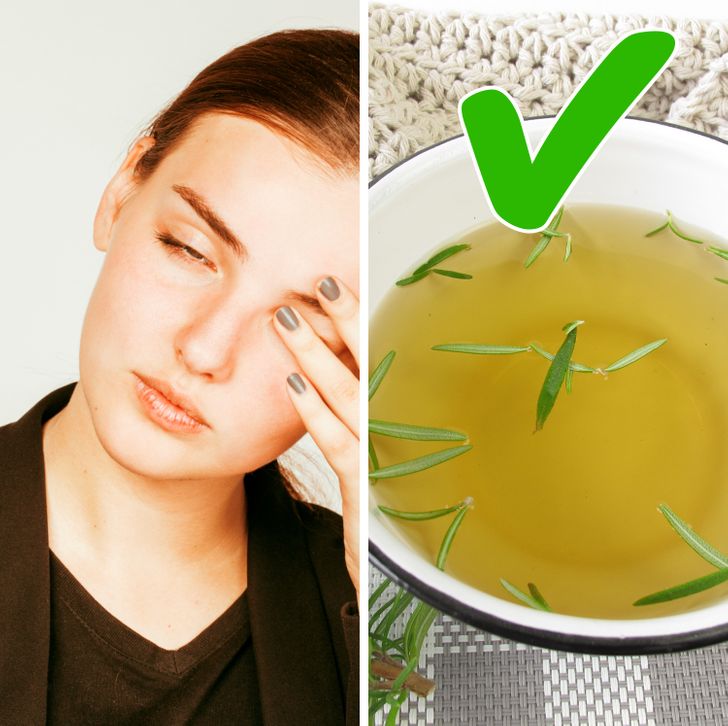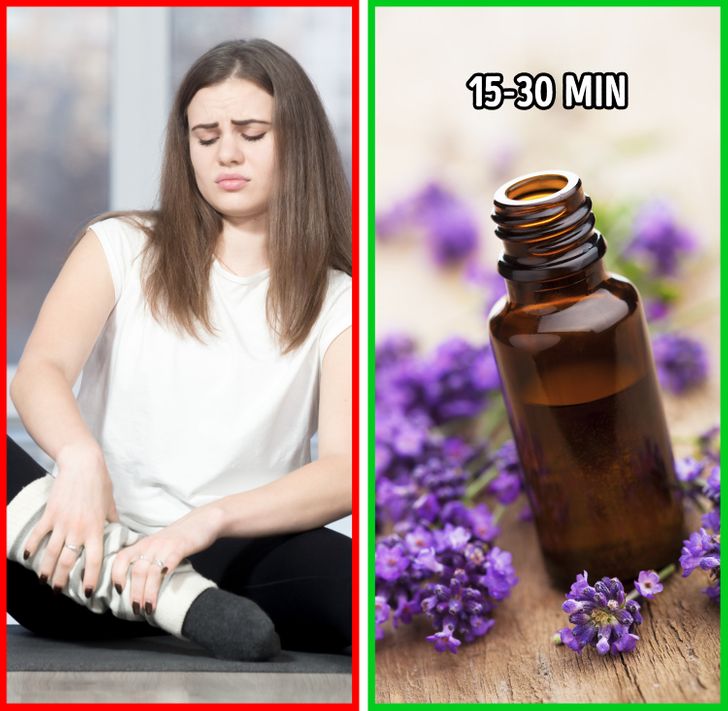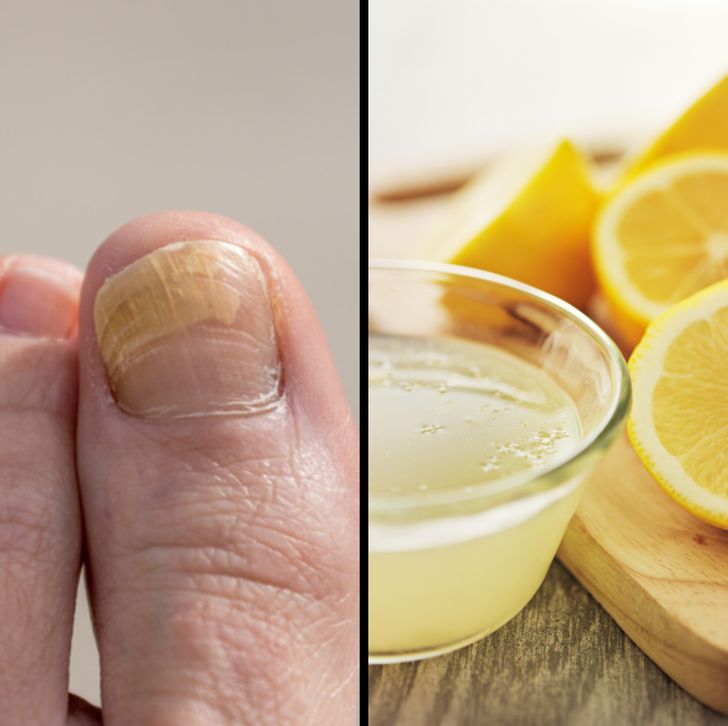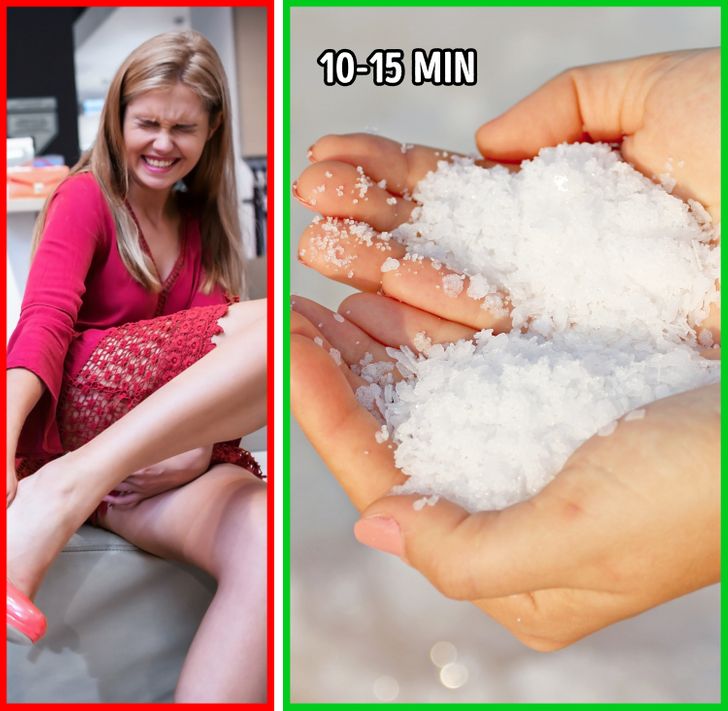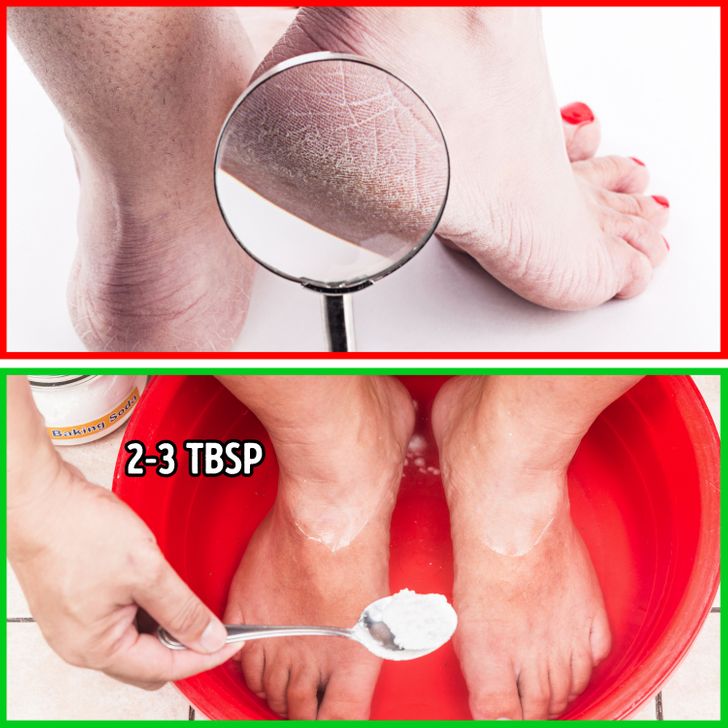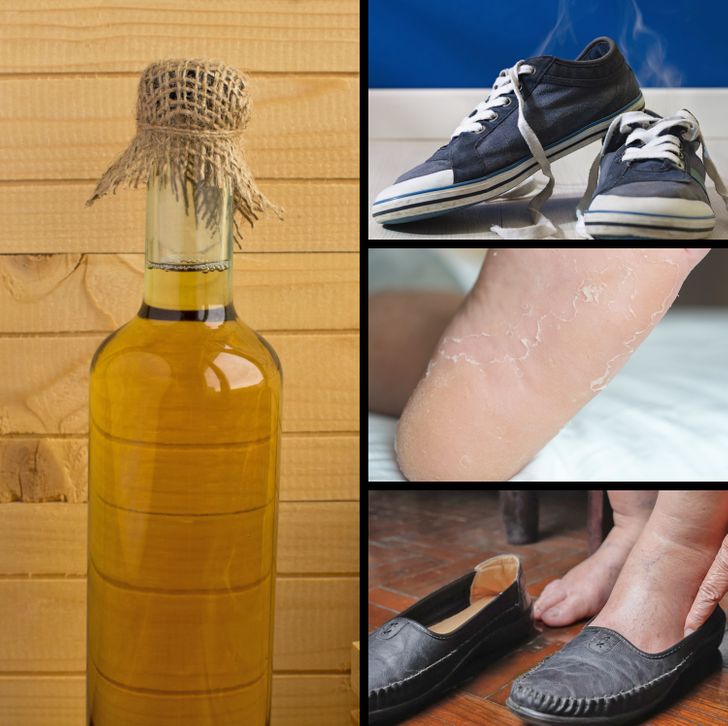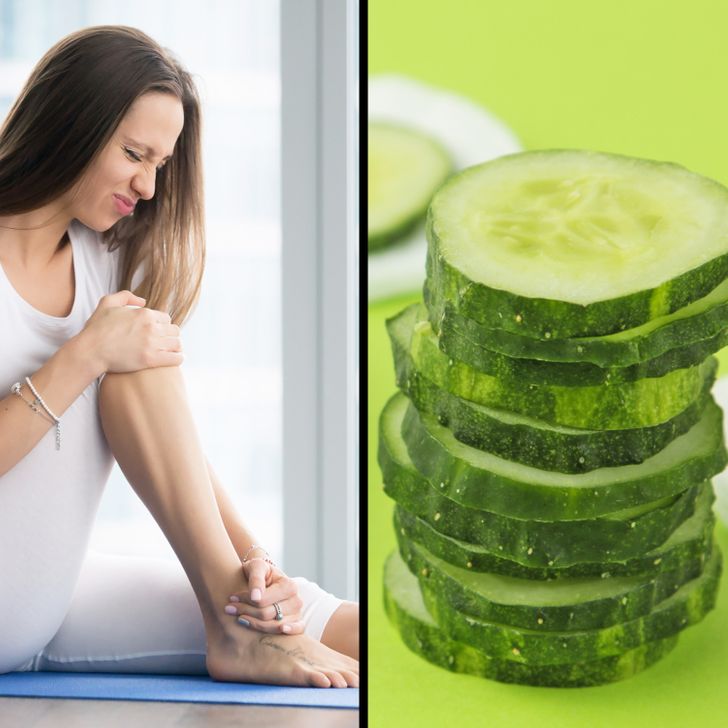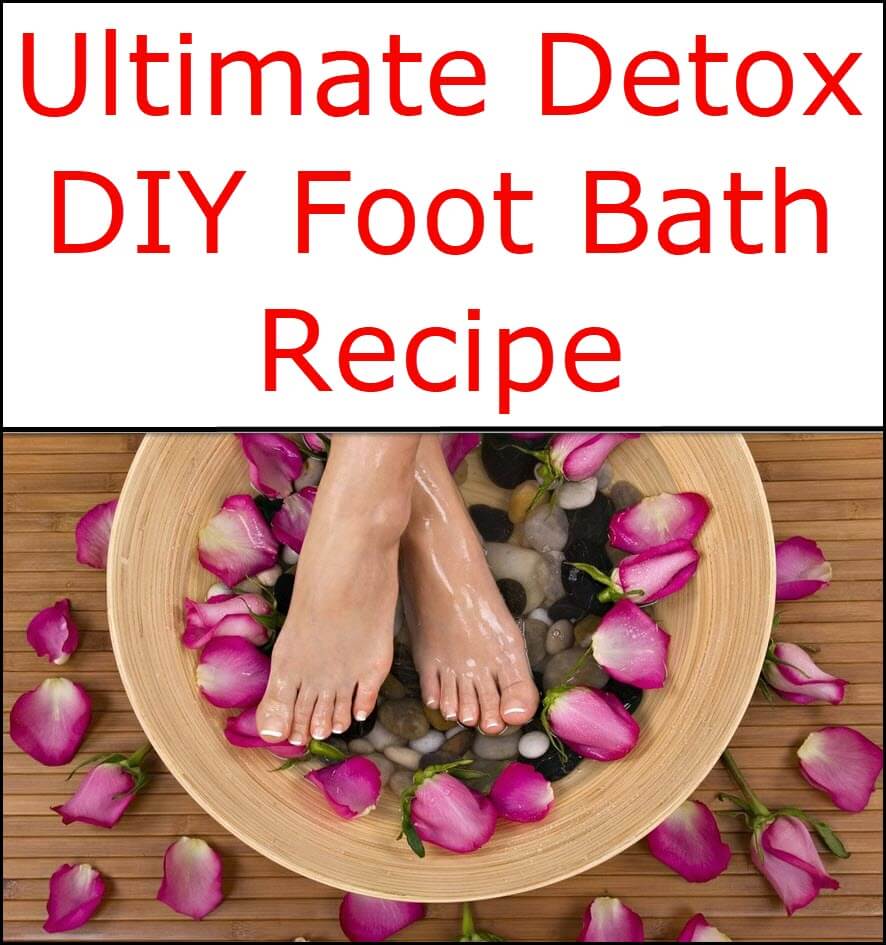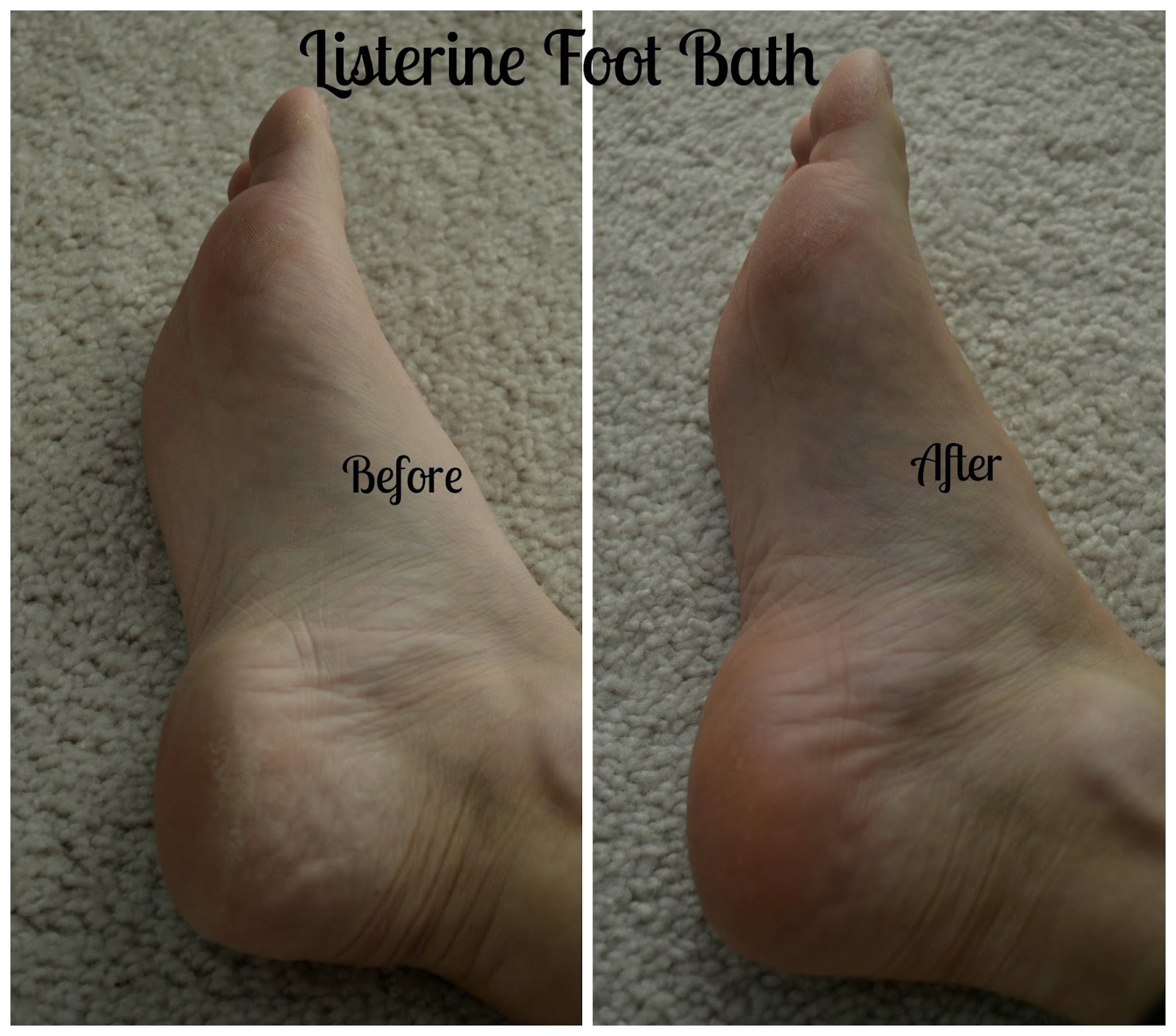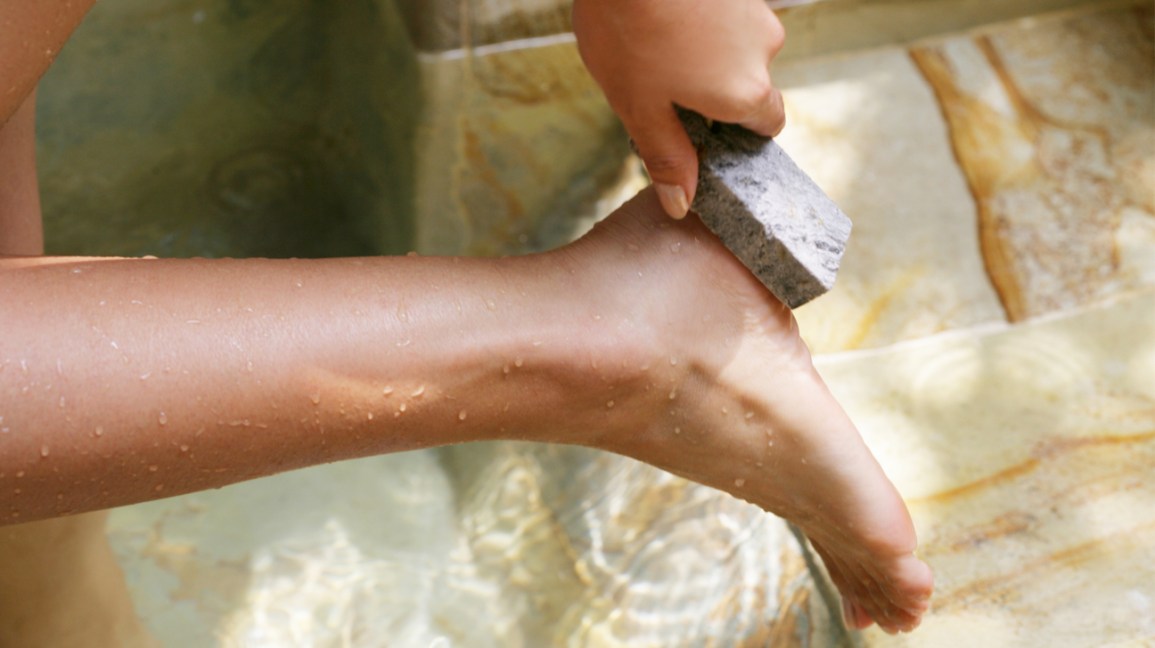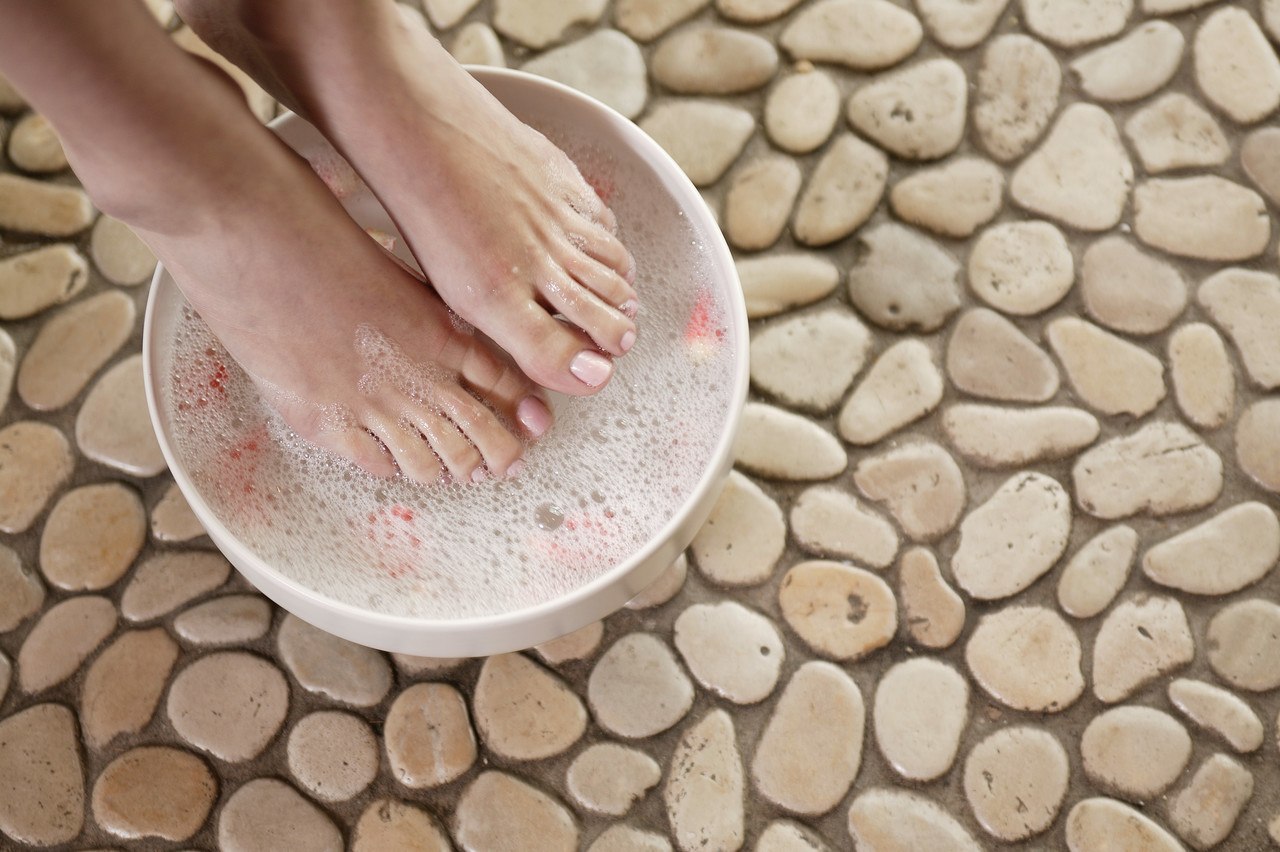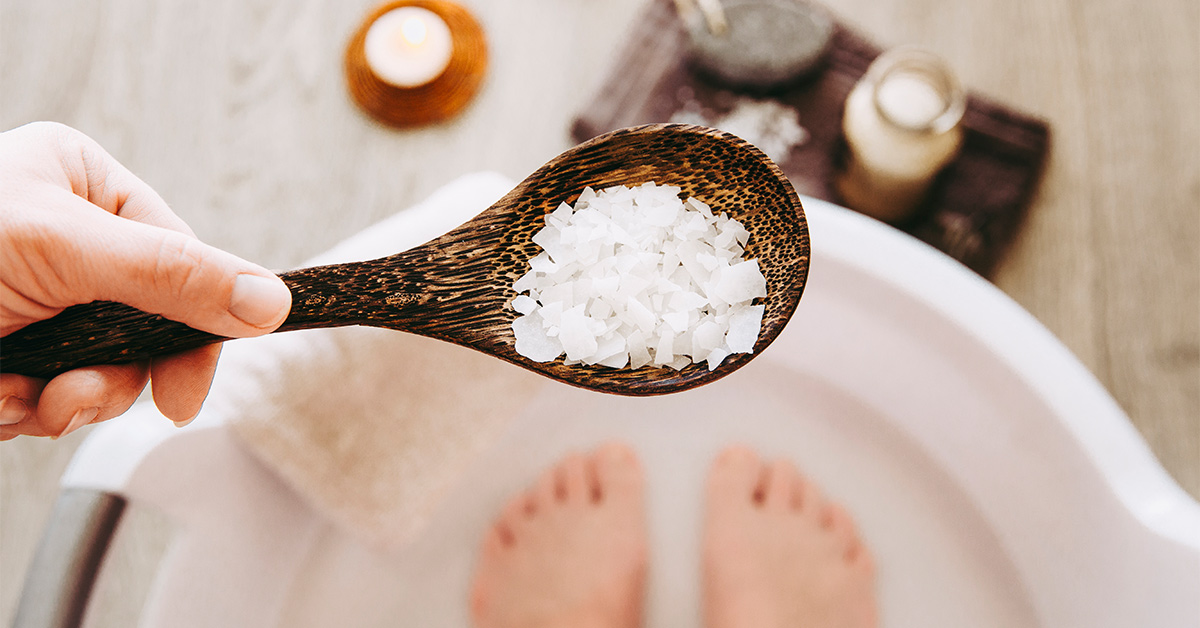A. 10 Types of Foot Baths and Which Health Problems They Can Solve
You don’t have to turn to a spa professional for treatment that offers you various health benefits. Soaking your feet can be done at a very low cost and with ingredients readily available in every household (they rarely require more than 5 items). These remedies can stimulate blood circulation, help cure certain diseases and have a powerful impact on the body and mind.
Big bonus, getting your own feet wet allows you to change the concentration of the ingredients for more benefits and lowering the risk of skin irritation from the addition of chemicals.
Bright Site T shares 10 magical foot bath recipes that are great for a variety of health benefits.
1. Contrast bath for swollen feet
Different water temperatures have a positive effect on the blood circulation in the legs. However, make sure that the water you use is not too hot. Take 2 buckets and fill the first half with hot and the second half with cold water. Soak your feet in hot water for 10 minutes, then place them in a bucket of cold water for another 10-12 minutes. Go back to the hot water and put your feet there for another 5 minutes.
2. Soak fragrant citrus fruits to get rid of foot odor
In addition to fighting off odors and sweat, this bath is a great way to relieve leg pain. Add a foot of lemon, lime, and orange (perfectly chopped) with mild hot water. Then add 4 drops of peppermint oil, 4 drops of tea tree oil and 3 tablespoons of baking powder. Soak your feet in the mixture for about half an hour.
3. Soaking eucalyptus to relieve stress
Inspired by this spa, it won’t be long before you feel more relaxed and calm after a foot bath. To soak in a bowl of hot water, add some nice Epsom salt of your choice and then 10-12 drops of eucalyptus oil. Soak your feet for 20-30 minutes.
4. Soak herbs to relax after a long day at work
This home remedy will help the body function properly, especially after many hours of walking or sitting. One of the bonuses that you get is detox and healthy skin. Aromatic herbs work wonders for your mood and help you relax completely. Take a foot bath in lukewarm water, add 2 teaspoons of Epsom salt or sea salt, 1 teaspoon of baking soda, 1 teaspoon of extra virgin olive oil, and any herbs – parsley, rosemary or mint. You can wrap the herbs in a cheesecloth to keep your bathroom clean.
5. Lavender bath to calm the cut muscles
Lavender is known as a natural pain reliever. This bath helps soothe sore joints and relieve strain on muscles, while the lovely scent soothes your mind. Add 1/2 cup of Epsom salt, 2 teaspoons of baking soda, and 6 drops of lavender essential oil to the bath with mild hot water. Soak your feet there for 15 to 30 minutes.
6. Lemon juice bath for yellow nails
This fresh moisturizer can help remove yellow stains from the nails themselves. However, it should be noted that rubbing lemon wedges directly on the problem area is a good treatment in this case too. For bathing, add a tablespoon of fresh lemon juice to the water and let your toes soak in the mixture.
7. Bittersome should be moist to reduce inflammation from salt
Epsom salt can have very good effects on pain and inflammation. However, this moisturizer is a great way to feel more comfortable and improve your focus. Put 2-2 teaspoons of salt in lukewarm water. Soak your feet in the mixture for 10 to 15 minutes. Salt can make the skin dry, so it’s important to keep your feet well hydrated after this process.
8. Baking soda for dry skin
A hot moisturizer with baking soda can be the definitive solution when looking to remove dead skin from your feet. However, this remedy doesn’t help everyone: baking soda can be irritating and dry out the skin. People with sensitive skin or allergies should avoid this foot bath. Add 2-3 tablespoons of baking soda to the entire foot bath with warm water to make the bath and soak your feet there for 10-20 minutes. After this process, apply plenty of moisturizer.
9. Soak in multi-purpose vinegar
Apple cider vinegar soothes swelling and ankles very quickly, relieving dry, cracked feet and treating calluses. This bath can also help reduce foot odor. Vinegar has good antifungal properties, so those who have tunnel fungus can also try it. Use cold water for this bath to prevent the skin from drying out. Mix 1 part vinegar with 2 parts water and let your feet soak in the mixture for 10-15 minutes. You can use essential oils to enhance the strong odor of your vinegar.
10. Cucumber bath without bathing to reduce stiffness
This homemade treatment works great for swollen feet and stiffness. Soaking cucumbers makes this super fresh too. Cut a cucumber into thin slices. You can cover the feet with a loose bandage (remove after 20 to 30 minutes) or simply squeeze out the cucumber juice, add it to the foot bath water, and apply the mixture to your feet – you will get the same result.
While foot baths can work well in a wide variety of areas, it’s important to keep in mind that these agents may not work as a medicinal alternative. In addition, people with lung diseases, allergies, diabetes, heart disease, low blood pressure, and a few other medical conditions should consult a doctor before attempting to bathe their feet.
B. 6 Easy Recipes for DIY Detox Foot Baths
Do you have pain in your legs after a long day? Soak, massage and rejuvenate your feet in these five DIY methods for your own foot spa day.
1. Herbal paradise
At the end of a long day, there is no better way to make your ass boil than with your noise. Fill a bucket or foot with light warm water, and add several rosemary springs. Not only does it smell great, rosemary is full of antioxidants and essential oils that will invigorate your feet and whole body.
2. Soak the swollen feet
Walking all day? You’ll love wetting these vibrant feet. Fill a basin with cold water, then slice a lemon into pieces and add to the crumbs. Lemon and mint oils will help rejuvenate your skin while cooling.
3. All-purpose foot detox bath
If you need a good wet in a foot bath, here is an admirable recipe. In a basin, add one gallon of water, salt and then 1 cup lemon juice, 1 tablespoon olive oil and 1 cup milk. Mix thoroughly, stick to your feet, and relax! Lemon juice is full of antioxidants, but nourishes and hydrates milk protein.
4. Foot bath listerine
Here is a home foot bath which is almost as great as a day spa! Take a plastic basin and fill it with warm to warm water (hot as you like)) Stir in a cup of Epsom salt (available at most drugstores) and 5-10 drops of essential oil such as eucalyptus, lavender or pepper. As an added bonus, add a few handfuls of marble to the bottom of the basin. Stick your feet in the basin and relax, rubbing the feet on top of the marble for a light massage.
5. Foot bath without bath
No water basin or looking for some more TLC? Try this cool and moisturizing mask for sore feet. In a blender puree 2 peeled cucumbers, 2 tablespoons lemon juice and 2 tablespoons almond or olive oil. Then, divide the puri into two large ziplock bags. Put one foot in each bag and massage the mixture on your feet. Sit back and relax for 10-15 minutes. Remove your feet from the bags, then wash thoroughly. They will not believe how smooth and fresh they are!
6. Bath bombs soaking feet
No spa day is complete without the relaxation provided by a scrub. Now you can take relaxation home by shopping from our bath bomb foot wet collection. Just like you use our regular bath bombs which you usually use to bathe your body with pure relaxation, these Fiji foot bombs give extra gentle loving care applied to your feet at the end of a long day.
Like our other bath bombs these luxury foot bath bombs are made with the finest natural ingredients and essential oils that will leave your feet feeling and smell absolutely new. The essential oils in our special blend not only give a truly relaxing scent to your bath, but it also softens and cleanses the skin of your feet so that you can take it any other day. We all deserve to be humiliated, but our feet are often missed. Take the same steps and care as the rest of your body with one of our most luxurious and all-natural foot bath bombs for the spa national foot scrub experience.
C. 7 Ways to Remove Dead Skin from Your Feet
We offer products that are useful to our readers. We can earn a small commission when you buy from the links on this page. Our process is here.
1. What is the cause of dead skin on the feet?
- The formation of dead or loose skin on your feet is one way for the naturally dead skin cells on your feet to swell and become painful.
- Maternal skin can develop from lack of moisture, from having closed shoes or socks on your feet all the time, or from rubbing while walking or running. It can also build up if you don’t care, exfoliate, or scrub your feet regularly.
- Dead skin under your feet can appear dry, cracked, or loose or drooping. It’s usually not painful unless it’s the result of athlete’s foot, eczema, or some other infection.
- If in doubt, contact your doctor for treatment. Otherwise, you may want to remove dead skin for cosmetic reasons or because it’s more convenient.
Here are some options for removing dead skin.
2. How to try
a. Pumice stone
Pumice stone is a natural lava stone that helps remove dead skin and calluses from your feet.
• How to use:
- Dip the pumice stone in warm water.
- You can soak your feet in warm water for 10 minutes to soften them.
Gently remove the stone using a circular or side-to-side motion around your feet to remove any dead skin. - Focus on removing the top layer of skin, rather than the entire area of dead skin, to encourage healthy cell turnover.
- Apply lotion or oil after it has softened your feet.
- Never use pumice stone on injured or sore areas.
b. Paraffin wax
- Many nail salons offer paraffin wax as a supplement to pedicure treatments.
- Paraffin wax is a soft wax that melts at a moderate temperature of around 51 degrees Celsius. Waxes shouldn’t be hot enough to burn or irritate your skin.
- You can also treat paraffin wax at home with a paraffin wax bath, or melt the wax in a saucepan and pour it into a bowl to soak your feet.
- During the paraffin wax treatment, dip your feet in the wax several times. After applying a few layers of wax, wrap your feet in plastic.
- Once the wax has hardened, you can remove the wax. Wax and dead skin on your feet are removed. Your feet should feel soft afterwards.
• Do not use paraffin wax if:
- Your blood circulation is very poor
- You have a rash or open pain in your legs
- As with diabetic neuropathy, you have lost the feeling in your legs
If you use paraffin wax at home, be very careful and monitor the wax temperature with a candy thermometer.
c. Foot peeling
- Most pharmacies and drug stores sell various types of foot scrubs over the counter. Find a granule that will help remove dead skin.
- Or you can make your own by mixing two tablespoons of sea salt in baby oil and lemon juice in sea amount.
- To use the foot scrub, apply the scrub directly to your feet and rub it gently with your palms. Or use a brush or sponge to remove dead skin.
- Rinse off the scrub thoroughly with warm water after use.
d. Oatmeal scrub
You can use oatmeal to do at home scrubs to remove dead skin. To prepare the scrub, make a paste by mixing equal parts of oatmeal with rose water or milk.
• How to use:
- Apply the scrub to your feet and set for 20 to 30 minutes.
- Use a foot brush to exfoliate your feet.
- Rinse in cold water and dry your feet.
- Apply a foot cream.
Do this treatment every other day for the best results.
e. Soak or scrub Epsom salts
- Epsom salt is a crystalline form of magnesium sulfate. Magnesium sulfate is a mineral compound.
- You can soak your feet in Epsom salts dissolved in water. It can help exfoliate and smoothen dry, cracked feet. This, in turn, can help remove dead skin.
• How to use:
- Make an Epsom salt by pouring half a cup of salt or a whole cup into a tub of hot water in one foot.
- Let rest for 20 minutes and soak.
- You can later use a pumice stone or foot brush to remove dry skin.
Mix a handful of Epsom salts with a tablespoon of bath or olive oil with your hand or bath sponge to create an Epsom salt scrub for your feet or shower.
Rub gently on damp skin to exfoliate, soften, and remove dead skin before rinsing it off with water.
f. Soak in vinegar
- Vinegar softens wet feet and allows you to remove dead, dry, or cracked skin.
- You can use almost any type of vinegar. Apple cider vinegar or white vinegar is a popular option and you can already keep it in your kitchen.
- Use cold water to keep it moist as hot water can make the skin drier. As a general guide, use 1 part vinegar to 2 parts water. Soak the feet for 5 to 10 minutes to start.
- If desired, soak with pumice stone to remove dry or loose skin per the guidelines above. Apply moisturizer, petroleum jelly, or coconut oil before putting on socks to lock in moisture after the vinegar is soaked.
- Do this treatment several times a week as it will make the skin drier.
g. Peel the baby’s feet
- Baby foot scrub is a popular 1-hour home treatment to remove dead skin and smoothen your feet.
- To use, apply the included plastic boots to your leaves for an hour. They contain gel solutions made from fruit acids and other moisturizers that help “remove” dead skin from your feet.
• Follow all directions for use on the packaging:
- After you wet your feet, protect the plastic boots on your feet with tape.
- Leave the herbs on for an hour.
- Remove the herbs and gently wash your feet with soap and water.
You need to get your feet wet every day to peel for the next three to seven days.
Although there is no scientific study to prove the benefits or effectiveness of this treatment, it is very popular online with loyal users.
3. Use with caution
a. Soak in baking soda
- Baking soda is a popular home treatment for removing dead skin from your feet.
- However, some dermatologists warn that baking soda can be irritating, cause redness, and make the skin drier. This is because it can upset the skin’s natural pH.
- If you have skin sensitivities or allergies, don’t use baking soda on your feet. Always ask your doctor or podiatrist before trying new treatments
- If you choose to use baking soda, use only a small amount (2-3 tablespoons) of hot water throughout the footmuff for 10 to 20 minutes.
- If you got wet, gently use a pumice stone or foot brush with the above method to remove dead skin. Then apply plenty of moisturizer.
- If you experience redness or irritation while wetting your feet, remove it from the solution immediately.
b. Soak in lemon water
Citric acid can help remove dead skin cells from your feet.
Similar to baking soda, however, using lemon on your feet can affect the skin’s natural pH, leading to more dryness and dead skin.
• Avoid lemons if you:
- You have a cut or an open wound on your leg
- Has sensitive skin
- Feel redness and irritation
Ask a podiatrist or dermatologist before using lemon or if you have any questions or concerns.
• If you choose this method:
- Prep a foot with mild hot water.
- Drink lemon juice from a lemon. You can also add a slice of lemon peel to the water.
- Soak your feet for 15 minutes.
- Use a foot brush to remove dead skin from your feet.
- Wash your feet and dry them thoroughly. Apply moisturizer or coconut oil if desired.
c. Razors or scrapers
- Just have a podiatrist or other trained doctor remove unwanted or dead skin from your feet with a razor or scrap.
- Don’t use razors or scrap metal on your feet at home. This can lead to foot damage or other medical problems.
- For example, if you accidentally cut yourself, there is a risk of bacterial infection.
If you have concerns about removing dry or dead skin, see your doctor for alternative medications or home treatments.
4. How to prevent dry skin on your feet
- The best way to prevent dead skin from building up on your feet is to regularly moisturize them.
- Ask a podiatrist to recommend a doctor’s oil, ointment, or cream to help protect your skin from dryness.
- Avoid alcoholic lotions, which can make your feet drier. Baby oil or petroleum jelly is usually safe.
- Soak your feet several times a week and use a pumice stone or foot brush to gently exfoliate dead skin.
- Avoid hot showers or baths and rinse them off with warm water to keep the skin from drying out.
5. Take out
Dead skin is usually nothing to worry about. It can often be removed at home. Always consult your doctor or podiatrist if you have excessive dead skin, calluses, cracked skin, sores, or rashes that won’t go away on their own or with home remedies.

